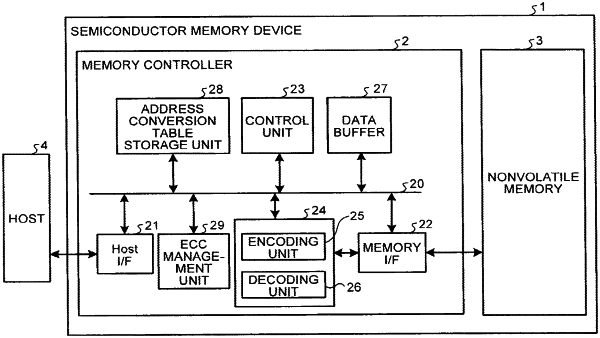| CPC H03M 13/35 (2013.01) [G06F 3/0619 (2013.01); G06F 3/064 (2013.01); G06F 3/0653 (2013.01); G06F 3/0679 (2013.01); G06F 11/1008 (2013.01); G06F 11/1044 (2013.01); G06F 11/1048 (2013.01); G06F 11/1068 (2013.01); G06F 11/1076 (2013.01); G11C 29/52 (2013.01); H03M 13/29 (2013.01); H03M 13/2906 (2013.01); H03M 13/2957 (2013.01); G11B 20/1833 (2013.01); G11C 7/1006 (2013.01); G11C 2029/0411 (2013.01)] | 20 Claims |

|
1. A memory system comprising:
a nonvolatile memory that includes a plurality of memory areas, the plurality of memory areas including at least a first memory area and a second memory area; and
a controller configured to:
manage a level of wear of each of the plurality of memory areas;
in response to the level of wear of the first memory area being lower than a first threshold,
determine to use a first encoding method for encoding a first size of first data to generate a second size of a first parity for correcting an error in the first data such that a sum of the first size and the second size is equal to a size of each of the plurality of memory areas,
encode the first data to generate the first parity, and
write the first data and the first parity into the first memory area; and
in response to the level of wear of the second memory area being higher than or equal to the first threshold,
determine to use a second encoding method for encoding a third size of second data to generate a fourth size of a second parity for correcting an error in the second data such that the third size is smaller than the first size, and a sum of the third size and the fourth size is equal to the size of each of the plurality of memory areas,
encode the second data to generate the second parity, and
write the second data and the second parity into the second memory area.
|